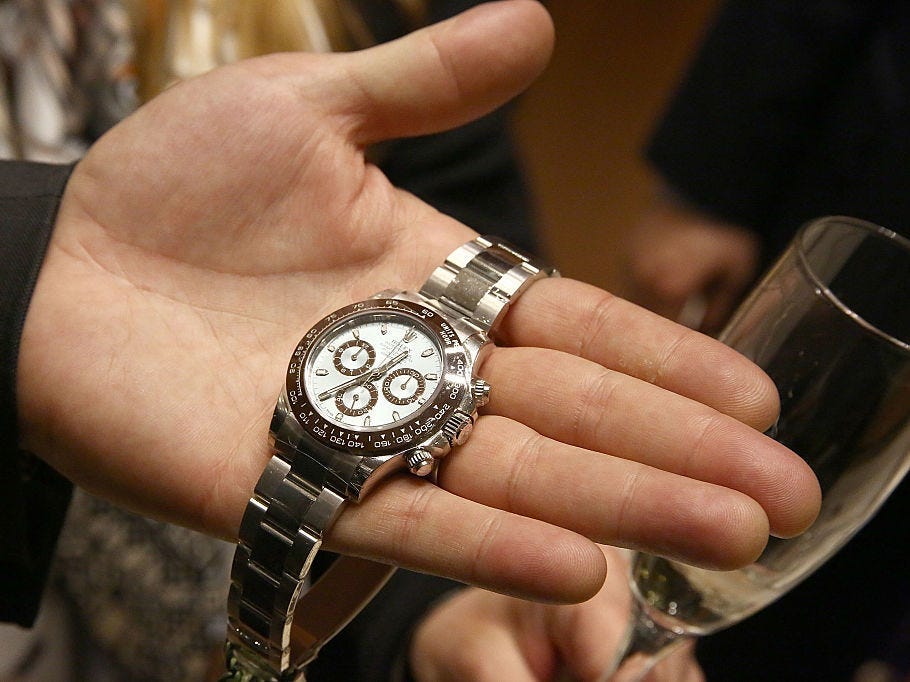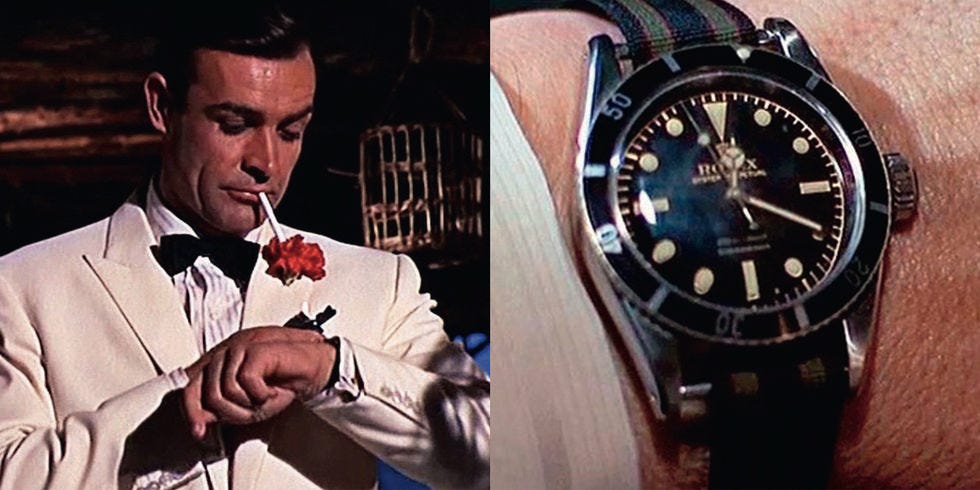
- Rolex effectively invented the category of watches you wear on your wrist over 100 years ago.
- For much of the company's history, it was focused on making timepieces that could survive anything.
- Precision and quality are now higher than ever, but that's not why fans pay a premium for the brand.
- See more stories on Insider's business page.
When watch aficionado Adam Golden stopped into his local Rolex dealer's shop in Florida this summer, there was just a solitary ladies' Datejust in the case available for sale.
Had the customer who originally ordered it not changed their mind, there would have been zero, he said.
Rolex reportedly makes close to a million watches per year, and advertisements are almost everywhere, but actually finding one to buy can prove to be an exercise in futility.
Its watches have always been expensive, but the scarcity and pricing today are a far cry from the days when distributors had plenty of inventory to sell at more negotiable prices, according to Jeffrey Hess, a Rolex collector and the co-author of Rolex Wristwatches: An Unauthorized History.
Rolex did not respond to Insider's request for comment on this story.
"Back then, anybody could afford a Rolex," Hess told Insider. "I drove around buying [Daytonas] for $3,000. Today, it's a $50,000 item on the secondary market."
Hess said the 1980's marked a turning point in the company's public image, during which the brand went from being an essential precision tool for professionals and adventurers to become the highly prized luxury collectible it is today.
"This watch was never meant to be a fashion watch," he said. "It was meant to be a roughneck's watch. It was meant to be a watch for swimmers, submariners, explorers."
Indeed, for much of the Twentieth Century, Rolex under its founder Hans Wilsdorf was at the cutting edge of horological innovation. From the radical idea to put a clock on a wrist, to plunging it into the English Channel, to summiting Mount Everest, to clocking land speed records, the brand emphasized utility and reliability above all else.
When Wilsdorf died in 1960, he was succeeded by Rolex's marketing director, André Heiniger, who spearheaded the decades-long effort to secure the brand's synonymity with luxury.
"Rolex," Heiniger reportedly said, "is not in the watch business. We are in the luxury business."

Dr. No
True to form, the brand boosted its visibility with placements in Hollywood films, sporting event sponsorships, and philanthropic awards. It also instituted a tighter grip on its supply, which enabled it to increase quality controls and maintain an allure of scarcity.
By the 1970's, these efforts to project an image of reliability and stability put Rolex in prime position to be a safe store of value during economic uncertainty. For example, the US abandoned the gold standard for the dollar in 1971, in 1972 Italy tightened its control of the Lira, and in 1973 an oil crisis sent the market reeling.
The Italians were the first to embrace the vintage Rolex business, Hess said, because watches were a stable and portable alternative to currency during this period.
Dealers would buy luxury watches in Switzerland to carry across the border and sell in Italy. Italians would then wear the Rolexes, Audemars Piguets, and Patek Philippes to the US and elsewhere where they would sell them for many times the amount of cash they could otherwise bring with them. Thus a collectors' market was born.
Heiniger retired in 1997, but the company has stuck to the playbook he perfected, even as more precise, versatile, and affordable alternatives have replaced Rolex's original purpose.
If anything, the intervening decades have supercharged the growth of the category. As a private (and notoriously secretive) company, Rolex doesn't disclose its financials, but Morgan Stanley estimated the company made 5.2 billion Swiss Francs in sales for 2019.
Meanwhile, a recent study from McKinsey and the Business of Fashion projects the secondary market for luxury watches to top $29 billion in sales by 2025.
"There's a lot less trust right now in the stability of fiat currencies than what we had before," Tim Stracke, CEO of Chrono24, the world's largest online luxury watch marketplace, said in an interview.
"If I compare the stability of a Euro, or US dollar, versus a Rolex Daytona, a bitcoin, a kilogram of gold? I'd rather have the hard assets," Stracke said.
That reputation has helped Rolex crush the competition with a quarter of the luxury watch market - more than double that of runner-up Omega. Plus, Rolex's dominance is self-reinforcing, Hess says.
"It's the watch that all these guys buy when they make it," he said. "They all buy the little wannabe Rolex brands in the beginning and finally, when they achieve success, they buy that Rolex."
In other words, without a Rolex, you really haven't arrived yet. It's not just the emblem of luxury, it's the front door.
